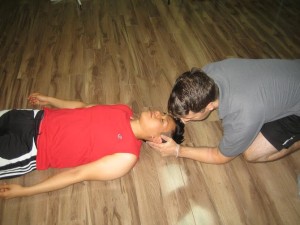A lightning strike is considered as a weather-related cause of death. In most cases, victims are injured or killed by a lightning strike while outdoors engaging in recreational activities such as swimming, boating, fishing or playing sports.
What are the types?
Injury from a lightning strike can arise in the following ways:
- Direct strike – individual is struck directly by lightning
- Side splash – lightning jumps from the main object while on its way to the ground
- Contact strike – an individual is touching an object that was struck by lightning
- Ground strike – the ground is struck by lightning and the current radiates out as a circle from the spot
- Blunt injury – individual is violently thrown from the strike or from the volatile force that arises as the nearby air is superheated and quickly cooled
What are the signs?

An individual hit by lightning can end up with a cardiac arrest. In some cases, there are no external indications of injury. Some might lose consciousness for fluctuating periods and appear confused and could not recall what happened. In some cases, the lightning strike might flash over the exterior of the individual, blow off his/he clothes and leave evident signs of damage.
Other injuries caused by a lightning strike include:
- Cardiac arrest or heart damage
- Superficial burns
- Keraunoparalysis – brief paralysis that is unique to a lightning strike
- Fractures and dislocations
- Skull fractures and cervical spine injuries might stem from associated blunt trauma
- Damaged lungs can cause shortness of breath
- Eye injuries can result to immediate visual issues or delayed cataract formation
- Ruptured eardrum that causes ear pain, hearing loss and dizziness
Management of a lightning strike
Upon assessment by a doctor, any injuries present are treated.
- Head injuries which is suggested by confusion or loss of consciousness requires monitoring in a healthcare facility.
- Possible heart damage detected in an ECG or blood enzyme level is managed in a healthcare facility by monitoring and drugs if needed.
- Ear and eye injuries, spinal injuries and keraunoparalysis might require monitoring in a healthcare facility.
- Fractures are managed with a splint or even surgery.
First aid
Perform CPR right away if the individual is not breathing and has no pulse. Call for emergency assistance right away.
Any individual suspected of being injured by a lightning strike requires further assessment in a healthcare facility even if there are no evident injuries.
Disclaimer / More Information
The information posted on this page on a lightning strike is for learning and educational purposes only. To learn to properly care for a victim, register for first aid training at one of our training centers located throughout Canada. The training centers are in Edmonton, Calgary, Vancouver, Kelowna, Saskatoon, Victoria, Surrey, Mississauga, Winnipeg, Red Deer, Toronto, Ottawa and Halifax.
